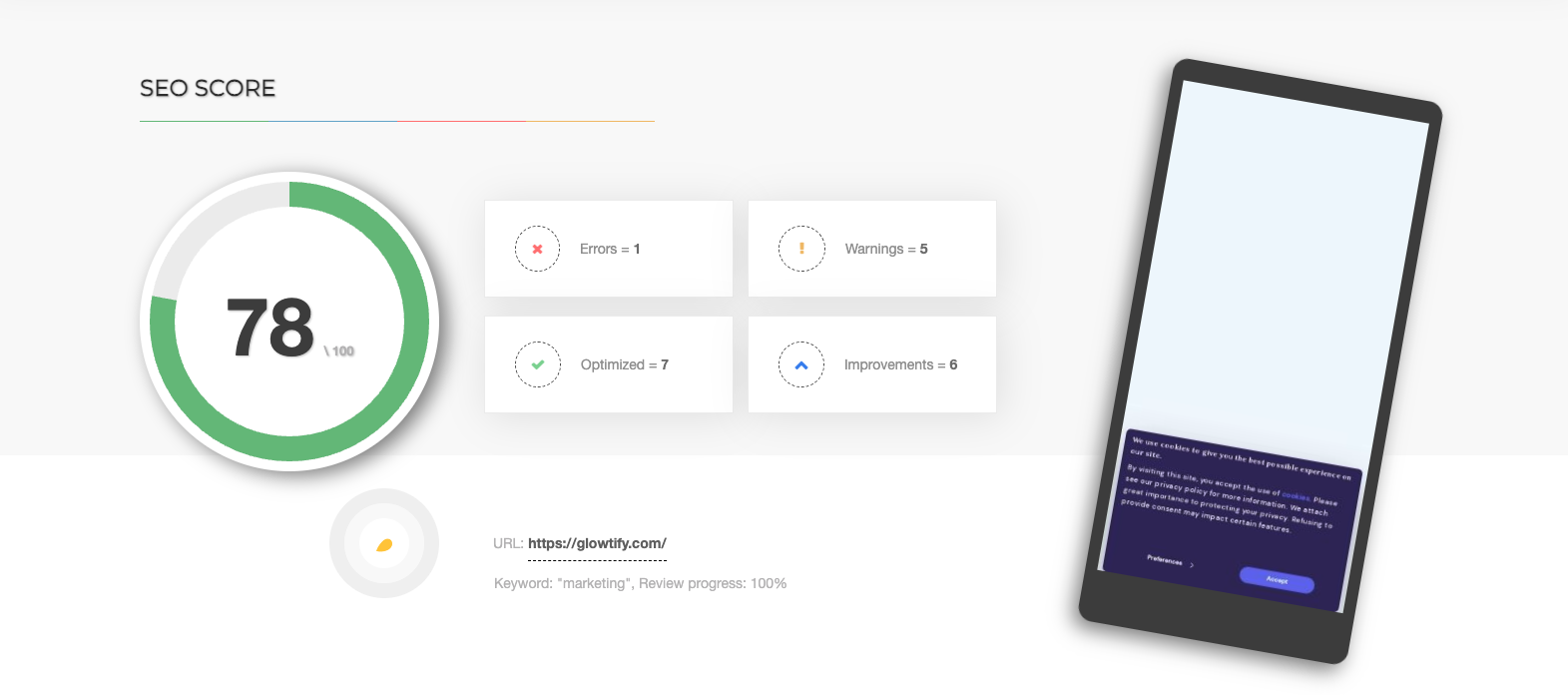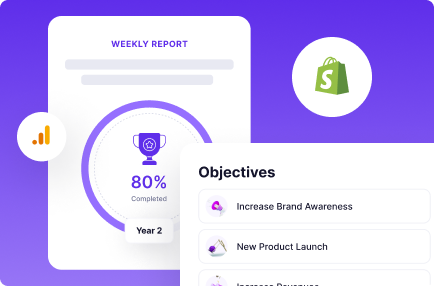Table of Contents
When desired outcomes are clear in marketing, methods can get muddled. Implementing OKRs helps enhance focus and align team efforts. But what exactly are OKRs?
They involve setting a specific objective and a few key performance indicators or milestones to track progress towards achieving that objective. It is no longer necessary to limit marketing-specific OKRs to traditional marketing metrics.
They can include things like website traffic and social media engagement. This blog post will define the top 10 marketing OKRs examples.
Generating Demand OKR Examples
When setting marketing OKRs, it’s important to consider how they tie into company-wide objectives and align with revenue targets. A common example is demand generation OKRs, which focus on attracting new leads and driving revenue growth.

For example, an objective may be to ensure the company meets its revenue targets. Its key results include increasing inbound sales from a certain amount per month and attracting a certain number of qualified leads.
Specific strategies such as account-based marketing can also be incorporated into demand generation OKRS. Overall, companies can effectively drive growth by setting clear and measurable goals for demand generation. In addition, they can achieve their financial goals.
Market Research OKR Examples
When it comes to product marketing, setting clear OKRs can make a big difference in the success of a new product release. In defining our objective to “Clarify our product messaging,” key results include.
Conducting user testing and researching new content distribution channels can help us understand how our target market receives our messaging, for instance. We can fine-tune our messaging further by analyzing customer feedback and creating extensive buyer personas.
Product marketing OKRs are just one example of how digital marketing teams can establish specific and measurable goals to drive success.
Website Inbound Leads OKR Examples.
One example of a marketing OKR could be “Increase website inbound leads.” This objective could have key results, such as increasing the monthly website visitors.
It also includes improving the website’s domain ranking on a metric such as Ahrefs and reducing the bounce rate on the homepage. Another potential marketing OKR objective could be to boost customer acquisition for the website.
Its key results include improving the click-through rate for recommended items, decreasing drop-off in the sales funnel, and increasing the net promoter score.

Finally, the third example of a marketing OKR could be to achieve record acquisition metrics. Its key results include increasing monthly active users, trial signups, paying customers, and decreasing churn rate.
By setting specific and measurable OKRs for marketing efforts, companies can track progress and see an increase in success.
Content Marketing OKR Examples
When setting goals for a marketing team, using OKRs can be valuable. In this example, the objective is to attract new visitors with a weekly newsletter. The key results involve:
- Creating a content strategy.
- Increasing the number of subscribers.
- Improving open and click-through rates.
- Relaunching the company blog with an increased focus on engagement and industry publication placements.
The marketing team has defined steps to reach their ultimate objective by setting specific and measurable key results. The aim is to attract new visitors through a successful newsletter campaign and updated blog.
In setting these OKRs, it’s important to remember that they should be aspirational yet achievable – pushing team members to challenge themselves while still being attainable within the allotted time frame.
Incorporating OKRs into your marketing strategy can help define objectives and drive success.
Social Media Marketing OKR Examples
Social media can be valuable when setting marketing objectives and key results. One example of an objective for social media marketing could be to increase your audience and drive engagement.
Key results for this objective could include increasing the number of followers or subscribers on various channels and measuring engagement levels such as likes, comments, and shares.
Another objective could be boosting the quality and quantity of traffic to your website or blog from social media sources. Key results for this could include measuring unique page views, session duration, and pages per session.
Finally, another potential objective could be cultivating a more engaged audience on social media. Key results for this could include measures of engagement such as Twitter engagements or LinkedIn engagement rates. By setting clear objectives and key results, you can effectively measure the success of your social media marketing efforts.
Search Engine Optimization (Seo) OKR Examples.
As a digital marketer, it’s important to keep track of your progress and set clear goals for improvement. By using SEO OKRs, you can achieve this. These objectives and key results can improve SERP’s position, enhance traffic quality, or increase website engagement.

One example of an SEO OKR could be to improve the website’s domain authority by obtaining 45 high-quality backlinks. Another example could be to decrease the bounce rate from 46% to 30% to increase engagement on the website.
Marketers can stay on track by setting and regularly evaluating these SEO OKRs. And they can continually strive for improvement in their digital marketing efforts.
Public Relations/Brand Marketing OKR Examples
One relevant example of a marketing OKR could be to become a leading industry brand. It could involve key results such as hiring a branding agency, reaching a certain number of viewers with new ad campaigns, and securing media placements and speaking opportunities.
Another potential marketing OKRcould be to improve communication around the company’s products and brand. It may involve releasing press publications, hosting webinars, and creating a brand book.
Additionally, boosting overall awareness with PR campaigns is another potential marketing OKR, including publishing press pieces, hosting meetups, and speaking at conferences.
Setting clear marketing OKRs can help keep the team focused and pave the way for success in reaching goals.
PPC Marketing OKR Examples
When setting marketing objectives and key results (OKRs), it’s important to consider short-term and long-term goals. For example, short-term OKRs could include reducing cost per lead or increasing the ad conversion rate in paid acquisition through PPC campaigns.
Long-term OKRs could focus on achieving a high search engine result page (SERP) position for target keywords or increasing click-through rate. It’s also important to track progress with specific, measurable key results.
It includes achieving sufficient marketing qualified leads (MQLs) from specific platforms like Google AdWords or Twitter ads. By setting clear OKRs for PPC marketing, your team will have a roadmap for improvement and success.
Community OKR Examples
A strong community is essential to any business, fostering relationships and driving brand advocacy. One of the key objectives for any marketing team could be to create a community that users love.
It could include launching a new community with a strong initial registration base, maintaining high levels of customer participation, and encouraging user-generated content.

The team may also aim to solidify its community’s presence within the industry. They can do it by engaging experts and thought leaders, publishing relevant articles, and conducting research to provide valuable insights for the community.
These goals can help ensure that the community continues to thrive and drive value for both customers and the company.
Partner Marketing OKR Examples
Regarding partner marketing, some examples of OKRs could include creating a community for partners and resellers, engaging with strategic partners, and improving the quality and quantity of established partnerships.
For instance, an objective could be to “create a community for our partners/resellers” with key results such as publishing partner-focused content and hosting educational events.
Another objective could be “better quality, higher quantity”, with key results focused on increasing the number of enterprise delivery partners and upping partner upgrade rates.
Account-Based Marketing (ABM) OKR Examples
An ABM approach allows for a more personalized and targeted approach to acquiring new customers, making it well-suited for targeting your company’s strategic accounts.
One potential objective for your ABM strategy could be to win over these strategic customers and drive increased order size. As a measure of success, key results may include generating a certain amount of qualified pipeline and closed-won sales from ABM efforts and specific tactics such as running LinkedIn Ad campaigns.
Another ABM objective may be to get the strategy over any sustainability gaps in a certain quarter, measuring success through monetary metrics like generated ARR and numbers of closed customers.
It also includes qualitative measures like the number of discovery meetings generated from ABM efforts. Setting clear and measurable OKRs for your ABM strategy can help ensure its successful execution and alignment with larger company goals.
Conclusion:
In the end, it’s important to remember that marketing OKRs should be specific, measurable, achievable, relevant, and time-bound to be effective. By creating OKRs that fit these criteria, you can set your team up for success in achieving their goals.
Thank you for reading this blog post! We hope it was helpful to you. So, What are some of your favourite marketing OKR examples? Share in the comments below!

Want more SEO traffic?
Discovering the secret to increasing your website’s traffic could be as simple as accessing this Free SEO analyzer tool!
Try it - it's free

